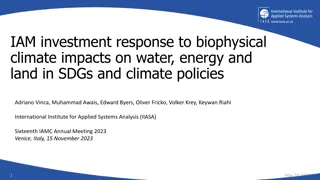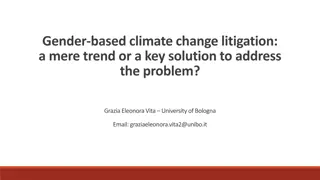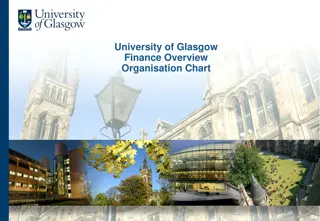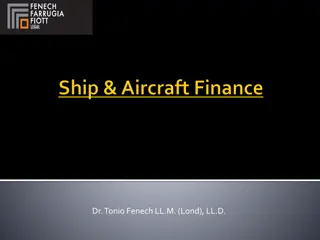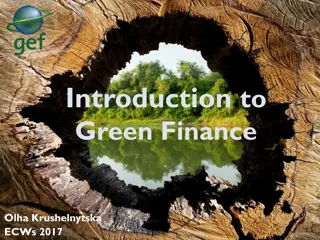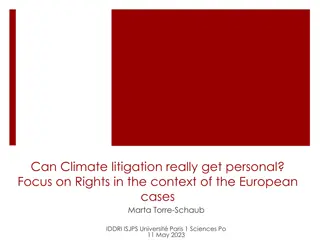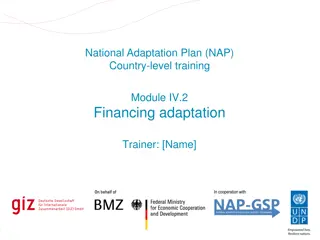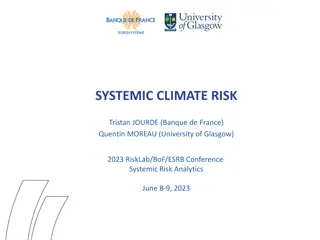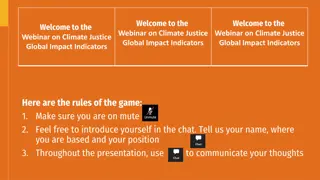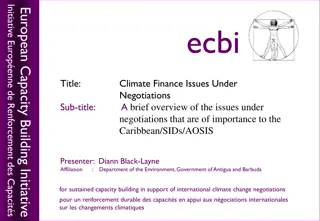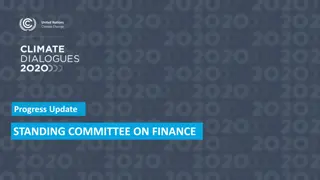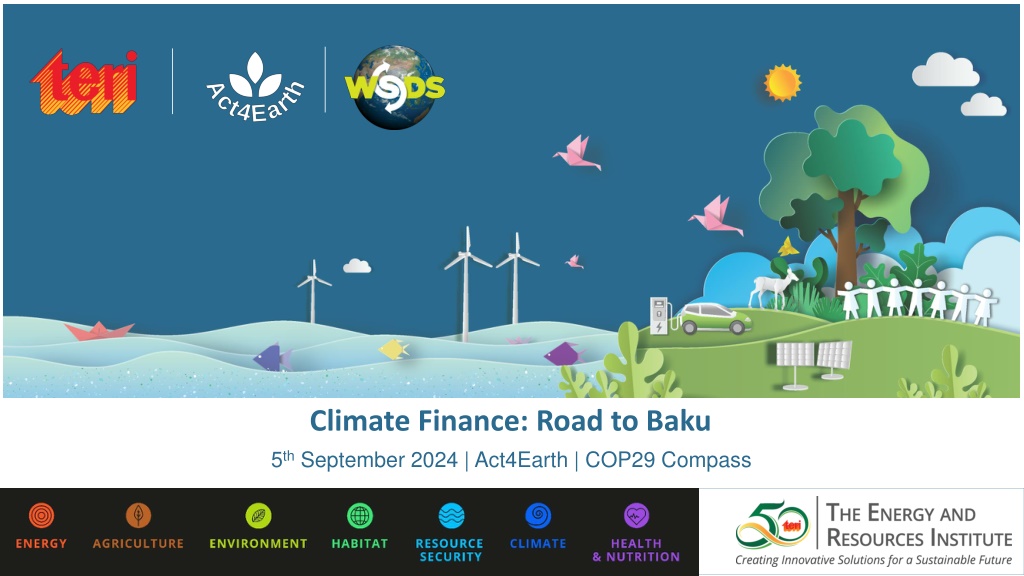
Achieving Climate Finance Goals: Insights and Challenges
Explore the journey towards achieving climate finance milestones, highlighting successes and challenges such as financial instrument imbalance, methodological concerns, adaptation versus mitigation focus, and more. Gain a deeper understanding of the initiatives, agreements, and processes shaping the landscape of climate finance post-2025.
Download Presentation

Please find below an Image/Link to download the presentation.
The content on the website is provided AS IS for your information and personal use only. It may not be sold, licensed, or shared on other websites without obtaining consent from the author. If you encounter any issues during the download, it is possible that the publisher has removed the file from their server.
You are allowed to download the files provided on this website for personal or commercial use, subject to the condition that they are used lawfully. All files are the property of their respective owners.
The content on the website is provided AS IS for your information and personal use only. It may not be sold, licensed, or shared on other websites without obtaining consent from the author.
E N D
Presentation Transcript
Climate Finance: Road to Baku 5th September 2024 | Act4Earth | COP29 Compass
State of Climate Finance USD 100 Billion Goal Achievement: Report claims USD 115.9 billion mobilized in 2022, surpassing the goal for the first time. Definition Issues: Lack of a consistent definition for climate finance; operational definitions vary, leading to discrepancies in reported figures. Imbalance in Financial Instruments: Loans dominate (69% of finance) over grants (28%). High debt levels for recipient countries. Multilateral Finance Growth: Significant increase in multilateral finance, especially from multilateral development banks (226% increase). Methodological Concerns: Inconsistent accounting practices and reliance on preliminary data reduce reliability and transparency. Adaptation vs. Mitigation Imbalance: Less than 30% of climate finance directed towards adaptation, despite growing needs.
New Collective Quantified Goal on Climate Finance - NCQG 2009 2015 2021 2024 Copenhagen Accord (2009): $100 billion per year goal by 2020. Paris Agreement (2015): New goal above $100 billion, set before 2025. COP26 (2021): Launched ad hoc work programme for NCQG. COP29 (2024): Finalization of NCQG, post-2025 target definition. Cancun Agreements (2010): Reaffirmed the $100 billion goal; established Green Climate Fund. COP24 (2018): Enhanced transparency framework for finance discussions. Ad Hoc Work Programme (2022-2024): Dialogues on structure, scope, key elements. 2010 2018 2022 2024
NCQG Process 2022 2023 2024 Q1 Q2 Q3 Q4 Q1 Q2 Q3 Q4 Q1 Q2 Q3 Q4 TED 1 TED 2 TED 3 TED 4 TED 5 TED 6 TED 7 TED 8 TED 9 TED 10 TED 11 TED 12 3rd High- level Ministerial Dialogue 1st High- level Ministerial Dialogue 2nd High- level Ministerial Dialogue COP 29 CMA.6 COP 27 CMA.4 COP 28 CMA.5
Convergences and Divergences Developed Country Position Broaden contributor base global efforts for Article 2.1(c) of PA More focus on low GHG emissions and climate-resilient development outcome- based Innovative financing; More focus on alignment and mobilization; private sector Timeframe: Flexible approach and adaptability. Developing Country Position Responsibility of developed nations CBDR-RC and equity Balance between adaptation, mitigation, and loss and damage needs-based Quantitative targets; Public finance, grants, and concessional loans Timeframe: Specific short-term (5 years) or medium-term (10 years), predictable and measurable goals.
Conclusion Too many options, too little time 11th TED (09 - 12 Sep 2024): To discuss preamble and context, goal formulation, quality, and transparency arrangements First Need Determination Report: 42% costed needs cumulatively amounted to USD 5.8 5.9 trillion considering the timeframe of 2030. Need for standardized definitions and methodologies. Increased focus on grants, concessional loans and adaptation finance. Greater transparency and accuracy in reporting. The politically sensitive aspect of the contributor base Addressing diverse priorities. Match climate change response with finance.






